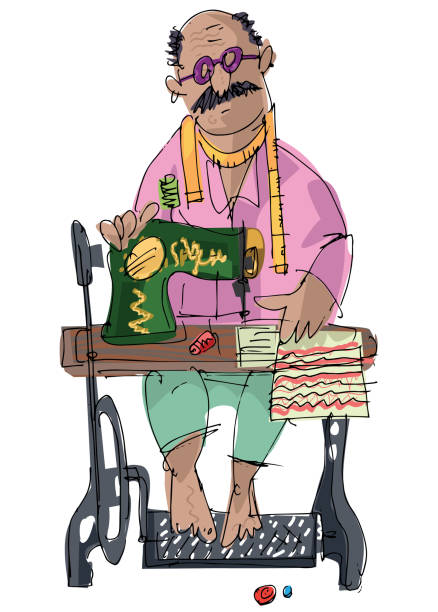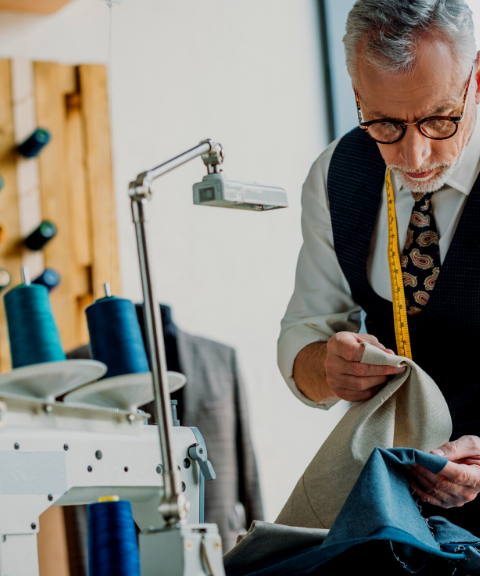Tailor Perth Insights: Discover the Art of Fine Tailoring in Perth
Tailor Perth Insights: Discover the Art of Fine Tailoring in Perth
Blog Article
Understanding the Tailoring Process: From Fabric Choice to Last Suitable for the Perfect Closet
The customizing process is an intricate interplay of art and science, starting with the important decision of material option and finishing in the accurate changes of final installations. Each fabric type brings unique top qualities that influence not just the aesthetic charm however additionally the garment's durability and suitability for different occasions.
Importance of Material Option
Picking the right fabric is essential in the customizing procedure, as it directly influences the comfort, toughness, and overall visual of the last garment (tailor perth). The choice of material establishes the structure for the garment's performance, functionality, and design. Various textiles have distinct residential properties, such as weight, stretch, and breathability, which can significantly affect how the garment drapes and fits the body
Furthermore, material option affects the garment's durability and simplicity of care. High-quality textiles can endure deterioration, preserving their appearance and framework over time, while lower-quality products may bring about pilling or fading. In addition, the best material adds to the garment's capacity to shift across periods and occasions, consequently improving flexibility.
A tailored item made from an ideal textile not only showcases craftsmanship but additionally boosts the wearer's confidence. Comprehending the subtleties of material selection is paramount for any kind of tailoring undertaking. It guarantees that the last item not only meets the aesthetic desires of the client however additionally lines up with functional demands, thus accomplishing a harmonious equilibrium between kind and function in the tailored closet.
Sorts Of Fabrics and Their Uses
Recognizing the different kinds of materials available is essential for making notified choices during the customizing process. Each textile possesses one-of-a-kind attributes that dictate its suitability for certain garments and celebrations.
Cotton, understood for its breathability and softness, is suitable for casual wear and summertime clothing. Its convenience allows it to be customized right into everything from tee shirts to outfits. Wool, on the various other hand, is preferred for its warmth and structure, making it a superb choice for official matches and outerwear - tailor perth. Its natural elasticity assists garments keep form in time.
Silk emanates luxury and is lightweight, making it best for eveningwear and fragile shirts; nonetheless, it calls for careful handling due to its frailty. Linen, with its textured finish, is a popular option for cozy environments, giving a airy and crisp feel, but it wrinkles easily, which may influence the garment's look.
Artificial textiles, such as polyester and nylon, deal toughness and resistance to wrinkles, making them suitable for everyday wear and energetic apparel. Understanding these fabric types and their buildings enables better decision-making, guaranteeing that each tailored item not just fits well yet additionally lines up with the designated purpose and celebration.
The Tailoring Techniques Described
The art of customizing relies upon a variety of methods that change material into well-fitted garments. Central to this process is pattern composing, where a dressmaker develops layouts based upon the client's measurements and wanted design. This first action makes certain that the garment will fit the user appropriately before any type of cutting takes place.
When patterns are established, reducing strategies come right into play. Precision is paramount as errors can cause misfitting garments. Tailors frequently make use of different cutting approaches, such as single-layer cutting for detailed styles and multiple-layer cutting for efficiency on typical patterns.
Basting is one more important strategy, enabling tailors to momentarily stitch textile pieces with each other for an initial installation. This approach supplies the possibility to analyze the drape and general silhouette prior to final sewing.
Seaming techniques, including flat-felled seams and French joints, enhance the garment's resilience and visual appeal. Tailors likewise employ methods such as interfacing and extra padding to offer framework and shape to details areas, like shoulders and collars.
Lastly, completing strategies, including hemming and side finishing, guarantee the garment's long life while giving a polished appearance. Together, these methods create the backbone of effective tailoring, causing splendid, tailor-made garments.
Suitable Adjustments and Considerations

Key considerations consist of the shoulder fit, which should neither sag nor limit activity, and the sleeve size, which should enable for comfortable arm movement while maintaining a refined appearance. Furthermore, adjustments at the midsection can fine-tune the silhouette, with options to let out or absorb material as required.
The increase of pants is another crucial element; it must rest pleasantly over the hips without causing pain, permitting for convenience of motion. Hemming sizes for both trousers and skirts should mirror the wearer's favored style while valuing proportions.

Preserving Your Tailored Clothing
Always comply with the treatment label guidelines, linked here which might advise completely dry cleaning for fragile fabrics or maker cleaning for more resilient materials. Stay clear of constant laundering, as this can put on down the material and alter the garment's shape.
Storage space is similarly essential; use padded wall mounts for layers and coats to maintain shoulder framework, and shop trousers folded up nicely or hung to avoid creasing. Protect garments from direct sunshine, which can fade shades and damages fibers.
Furthermore, periodic inspections for minor repairs can protect against bigger issues. Check for loosened buttons, tearing seams, or signs of moth damages, dealing with these problems without delay to keep the garment's stability.
Lastly, take into consideration seasonal turning. Wearing customized pieces in moderation permits fabrics to recoup, prolonging their lifespan. By carrying out these maintenance techniques, you can ensure that your customized garments remain as immaculate as the view it day you first used them, enhancing your perfect closet for many years ahead.
Final Thought
The customizing procedure, incorporating textile option, experienced methods, and exact suitable modifications, plays a critical duty in producing garments that boost both convenience and design. Recognizing the relevance of upkeep expands the life of customized garments, solidifying their worth in a well-curated closet.
Picking the appropriate textile is crucial in the customizing process, as it directly affects the convenience, durability, and total visual of the final garment. The choice of material sets the foundation for the garment's functionality, design, and efficiency. Different textiles possess distinct buildings, such as weight, breathability, and stretch, which can substantially impact how the garment drapes and fits the body.
The art of customizing relies on a variety of strategies that transform fabric right into well-fitted garments.The tailoring procedure, incorporating textile option, experienced techniques, and specific fitting modifications, plays a critical role in producing click here to find out more garments that boost both convenience and design.
Report this page